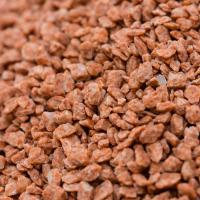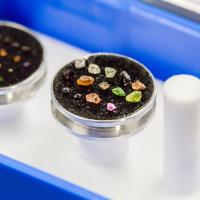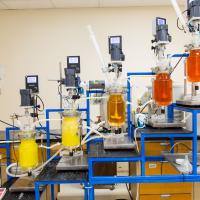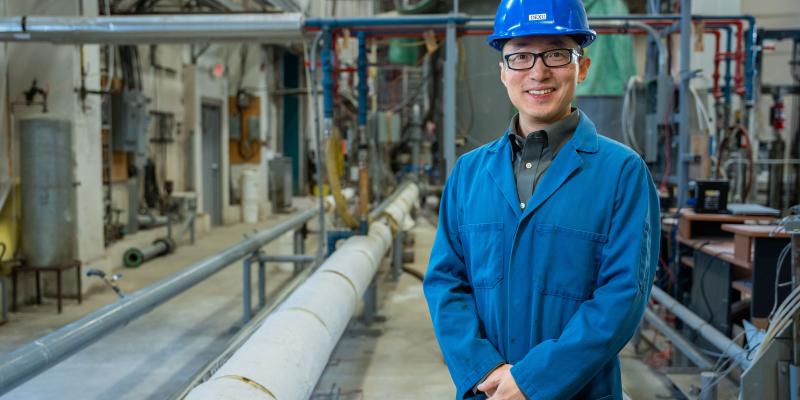SRC Geoanalytical Laboratories has provided fire assaying services to exploration and mining companies for over 40 years.
After several decades of collaboratively serving the gold and base metals industry with TSL Laboratories, TSL’s current owners have retired and SRC is continuing to serve TSL’s former clients. Please contact the lab if you're a former TSL client and we'll be happy to get you set up.
View our Gold Analyses Service Schedule for more information.
sample Receiving
Samples are received, sorted and verified according to a Sample Submittal Form with any discrepancies between the actual shipment and the submittal form noted and reported. The shipment is assigned an SRC reference number (S#) and a worksheet with the analyses requested is generated. Labels for the samples are produced from the worksheet identifying the S# and customer sample number. The labels are placed on tin-tie bags for the pulverized portion (pulp), and plastic bags for the crushed material (rejects).
Original sample bags are discarded due to damage incurred during shipping.
Sample Preparation
Samples are crushed in oscillating jaw crushers to 70% passing 10 mesh (1.70mm). Samples are riffle split; typically a 250 g sub sample is pulverized, the remaining crushed sample is stored as reject. Ring-mill pulverizers grind samples to 95% passing 150 mesh (106 micron).
At the beginning of each shift and/or the start of a new group, samples are screened to ensure correct particle sizes. Crushers, rifflers, and pans are cleaned with compressed air followed by a visual check to ensure cleanliness between samples. Pulverizing pots and rings are brushed, hand cleaned, and air blown. Our pulverizers are capable of grinding up to 1000 g. Crushers are capable of crushing as fine as 95% passing 10 mesh.
Special or customized sample preparation procedures are easily adaptable.
Precious metals by fire assay
Trace level gold analysis begins with a flux mixture of litharge, soda, borax, silica, fluorspar with further oxidants or reductants added as required. The relative concentrations of the fluxing materials are adjusted to suit the type of sample being analyzed. Crucibles are placed into trays of 24 and ~120 grams of flux is added. Twenty samples, two repeats, a standard and a blank are weighed into the crucibles, then placed into a tumbler and mixed for 10 minutes.
When mixed, the samples are removed, inquarted and fused. The resultant lead button is then cupeled. After cupellation the Doré bead is dissolved in aqua regia and analyzed by Atomic Absorption Spectrometry. Gold values >1000 ppb are routinely analyzed by FA/Gravimetric.
Gravimetric gold analysis begins with a flux mixture of litharge, soda, borax, silica, fluorspar with further oxidants or reductants added as required. The relative concentrations of the fluxing materials are adjusted to suit the type of sample being analyzed. Crucibles are placed into trays of 24 and ~120 grams of flux is added. Twenty samples, three repeats and a standard are weighed into the crucibles, then placed into a tumbler and mixed for 10 minutes.
When mixed, the samples are removed, inquarted and fused. The resultant lead button is then cupeled. After cupellation the subsequent Doré bead is flattened, placed in a porcelain cup and parted with a dilute nitric acid solution. The gold obtained is decanted with de-ionized water, dried, annealed, and weighed on a microbalance.
Platinum and palladium analyses parallel the trace level gold procedure.
Trace Level/Ore-Grade analysis
Atomic Absorption Spectrometry (AAS)
& Inductively Coupled Plasma Spectrometry (ICP-OES)
Procedures available with a variety of sample weights and acid combinations with (AAS) or (ICP-OES) finish. Depending on methods selected geochem (ppb) values to ore grade (%) values can be obtained for most elements of interest.
Please contact us to discuss which packages may best suit your requirements.
Data collection/Reporting
Data is collected at each workstation. Data access is retrieved through the network system. The main server generates the certificates and converts the program used at SRC to client-readable formats for digital transfers. A protocol for receiving results will always be confirmed prior to releasing any values.
Sample storage
All samples are stored for three months without charge.
Arrangements should be made if longer storage time is needed. SRC will take all precautions to protect the integrity of samples in storage.
All samples in long-term storage are in secure warehouses.




